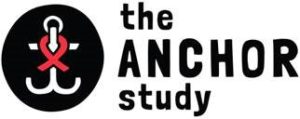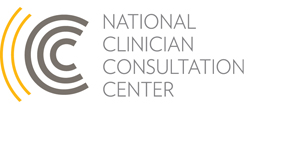Case of the Month: Review of Anal Cancer Screening for HIV-Positive Patients
Anal cancer rates are rising among people living with HIV, one of the groups at highest risk for this condition. The populations with highest incidence of anal cancer include HIV-positive men who have sex with men, HIV-negative men who have sex with men and HIV-positive cisgender women[1]. Additionally, patients who are immune-suppressed for other reasons (extensive chemotherapy, transplants, and some autoimmune conditions) and women with a history of precancerous conditions in the anogenital tract are also at high risk for anal cancer.
While the American Cancer Society estimates that, in 2016, anal cancer was diagnosed in 8,080 patients[2], there are currently no standard national recommendations for routine screening. The section of the Guidelines for Prevention and Treatment of Opportunistic Infections in HIV-Infected Adults and Adolescents which discussed this topic (last updated 2/2016) highlighted recommendations by specialists to perform annual anal cytology testing for HIV-positive patients. Some experts recommend annual anal cytology for both HIV-positive and HIV-negative patients at risk[3].
When screening for anal cancer, the clinician can first perform a digital anal rectal examination (DARE), which requires no equipment and can be performed by any health care provider. DARE is an effective way of detecting some abnormal growths or masses. The DARE is then followed by collecting samples using an anal swab, which are then sent for cytology testing. Collecting samples for anal cytology requires minimal training. If abnormal results are found (i.e., ASCUS, ASC-H, LSIL, HSIL), the patient should be referred for HRA (high-resolution anoscopy). However, as the OI Guidelines note, “anal cytology screening should not be done without the availability of referral for high resolution anoscopy”[4].
While early detection and treatment of anal high-grade squamous intraepithelial lesions (HSIL, anal pre-cancer) have the potential to reduce the incidence of anal cancer, this relationship remains under-researched and broad scientific/clinical consensus has not yet been reached. Moreover, HPV vaccination is becoming increasingly visible as an effective prevention intervention. Therefore, given the relative lack of data on this subject and limited widespread access to HRA at this time, we recommend that clinicians have a risk-benefit conversation with their patients.
Further research is needed to shape standard recommendations for screening and preventing anal cancer. One study leading this effort nationally is the ANCHOR Study,  which aims to find the best way to prevent anal cancer among HIV positive men and women ages 35 and older. Eligible participants who are found to have HSIL and consent to participate are randomized to one of two groups: Active Monitoring or Treatment. Treatment consists of one or more approaches chosen by the treating physician in consultation with the patient. In addition to helping to determine the standard of care for screening and prevention of anal cancer, this national study will also provide important insight into the natural history of HPV-related neoplasia that may lead to new approaches to diagnosis and treatment. For more information visit the ANCHOR Study’s website. To learn about other anal cancer research studies, visit UCSF’s Anal Cancer Information site.
which aims to find the best way to prevent anal cancer among HIV positive men and women ages 35 and older. Eligible participants who are found to have HSIL and consent to participate are randomized to one of two groups: Active Monitoring or Treatment. Treatment consists of one or more approaches chosen by the treating physician in consultation with the patient. In addition to helping to determine the standard of care for screening and prevention of anal cancer, this national study will also provide important insight into the natural history of HPV-related neoplasia that may lead to new approaches to diagnosis and treatment. For more information visit the ANCHOR Study’s website. To learn about other anal cancer research studies, visit UCSF’s Anal Cancer Information site.
Resources:
- Information About Anal Cancer, HSIL and LSIL
- How to Perform a Digital Anal Rectal Examination (DARE)
- List of HRA Providers in the United States
- Obtaining a Specimen for Anal Cytology
- Interpreting Cytology Results
- Darragh T, Winkler B. The ABCs of Anal-rectal Cytology. Cap Today Online. May 2004.
- Berry JM, Palefsky JM. Anogenital Neoplasia
and HIV. HIV InSite Knowledge Base Chapter. Nov 1998. - Panel on Opportunistic Infections in HIV-Infected Adults and Adolescents. Guidelines for the prevention and treatment of opportunistic infections in HIV-infected adults and adolescents: recommendations from the Centers for Disease Control and Prevention, the National Institutes of Health, and the HIV Medicine Association of the Infectious Diseases Society of America.
[1] UCSF Anal Dysplasia Clinic. Information About Anal Cancer, HSIL and LSIL. Accessed Dec 29 2016.
[2] American Cancer Society. Cancer Facts & Figures 2016. Available at http://cancer.org/acs/groups/content/@research/documents/document/acspc-047079.pdf. Accessed Dec 29 2016.
[3] Berry JM, Palefsky JM. Anogenital neoplasia and HIV. HIV InSite Knowledge Base Chapter. Nov 1998.
[4] Panel on Opportunistic Infections in HIV-Infected Adults and Adolescents. Guidelines for the prevention and treatment of opportunistic infections in HIV-infected adults and adolescents: recommendations from the Centers for Disease Control and Prevention, the National Institutes of Health, and the HIV Medicine Association of the Infectious Diseases Society of America. Available at http://aidsinfo.nih.gov/contentfiles/lvguidelines/adult_oi.pdf . Accessed Dec 29 2016.
Because CCC consultations are based on information provided by the caller or clinician accessing the online consultation center, without the benefit of a direct evaluation or examination of the patient, consultations are intended to be used as a guide. They do not constitute medical advice and are not to serve as a substitute for medical judgment. This Case of the Month includes consultation based on the most up-to-date evidence at the time of its publication. To learn about current recommendations, please call one of our clinical consultation lines.
 University of California, San Francisco |
University of California, San Francisco |
